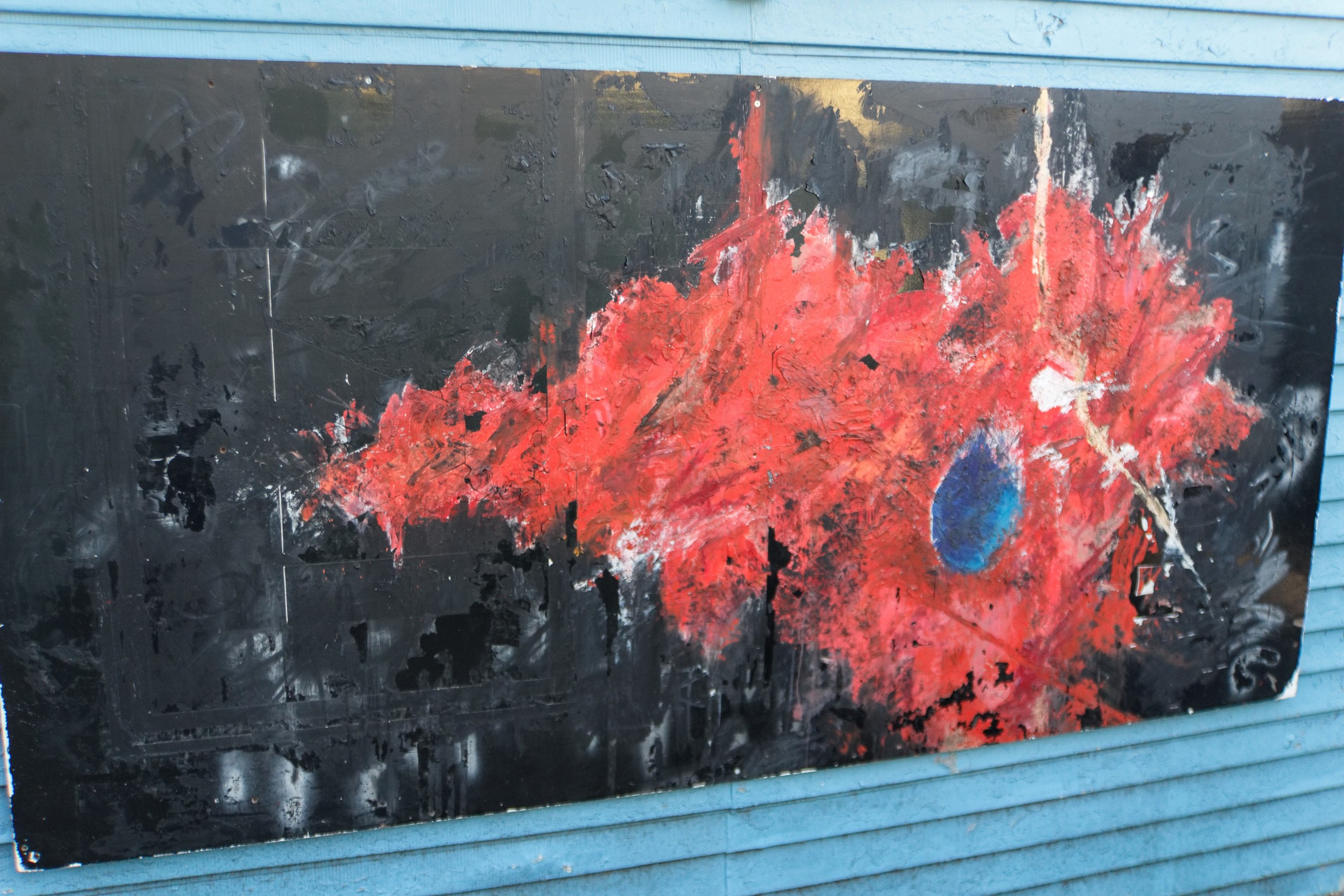
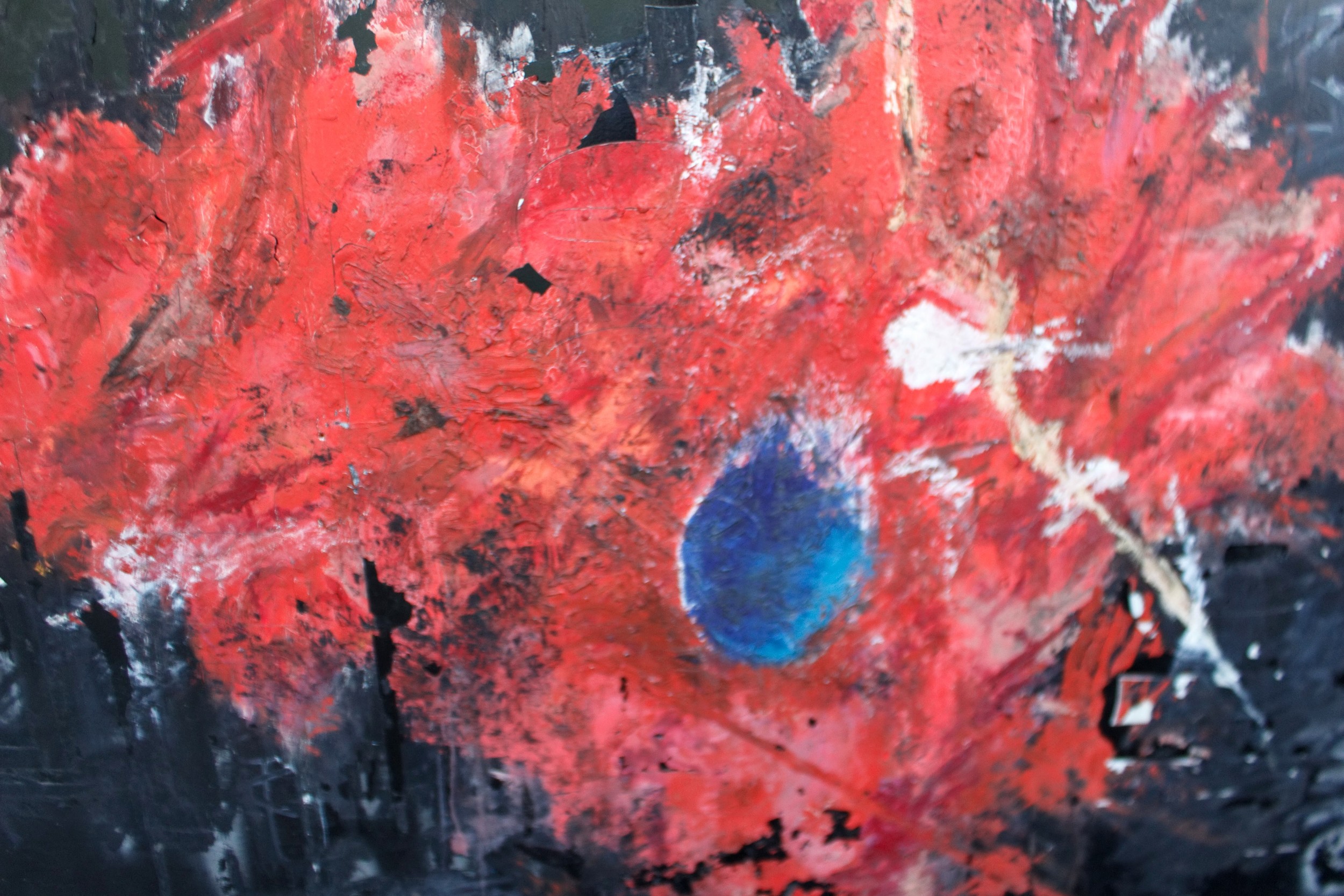
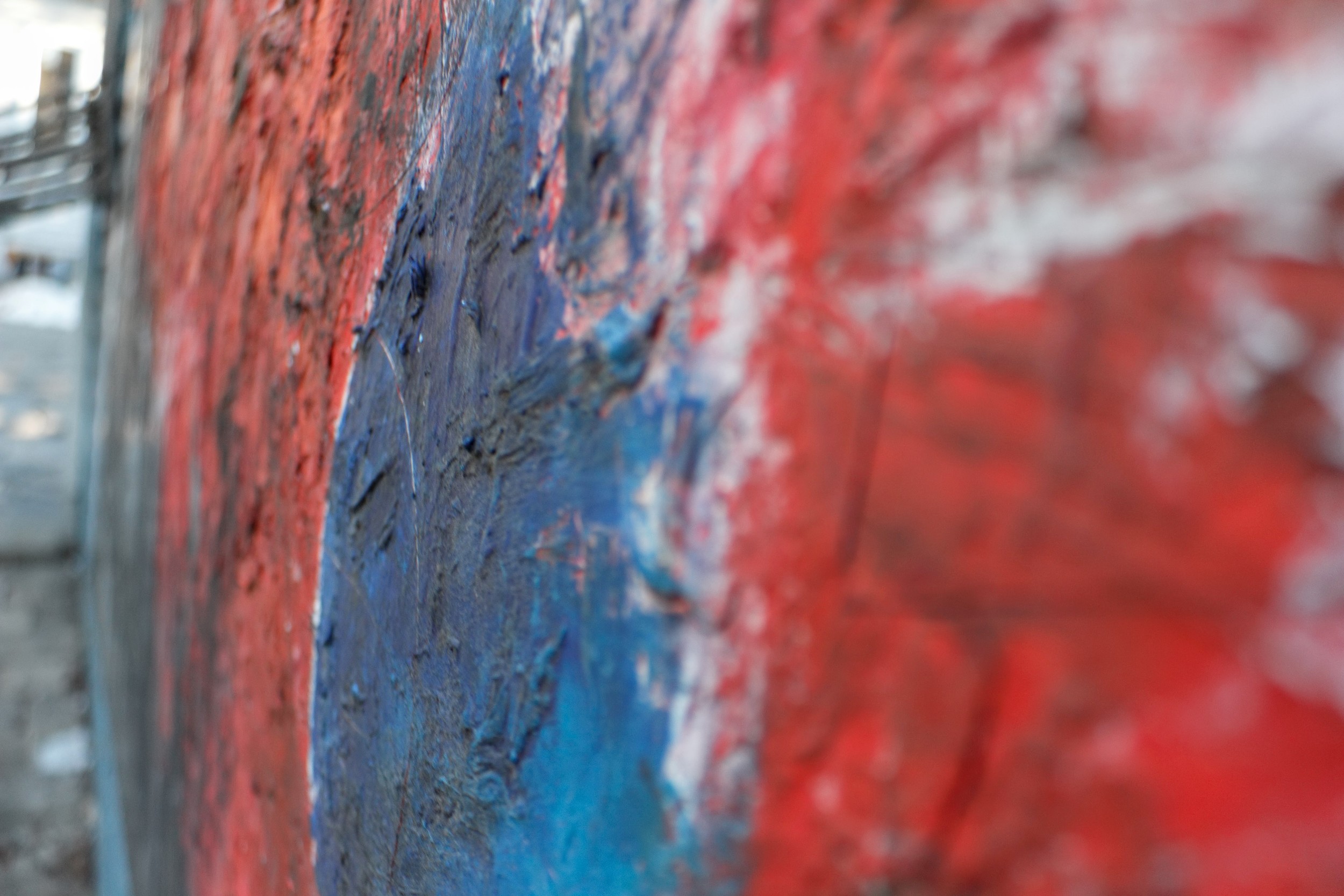
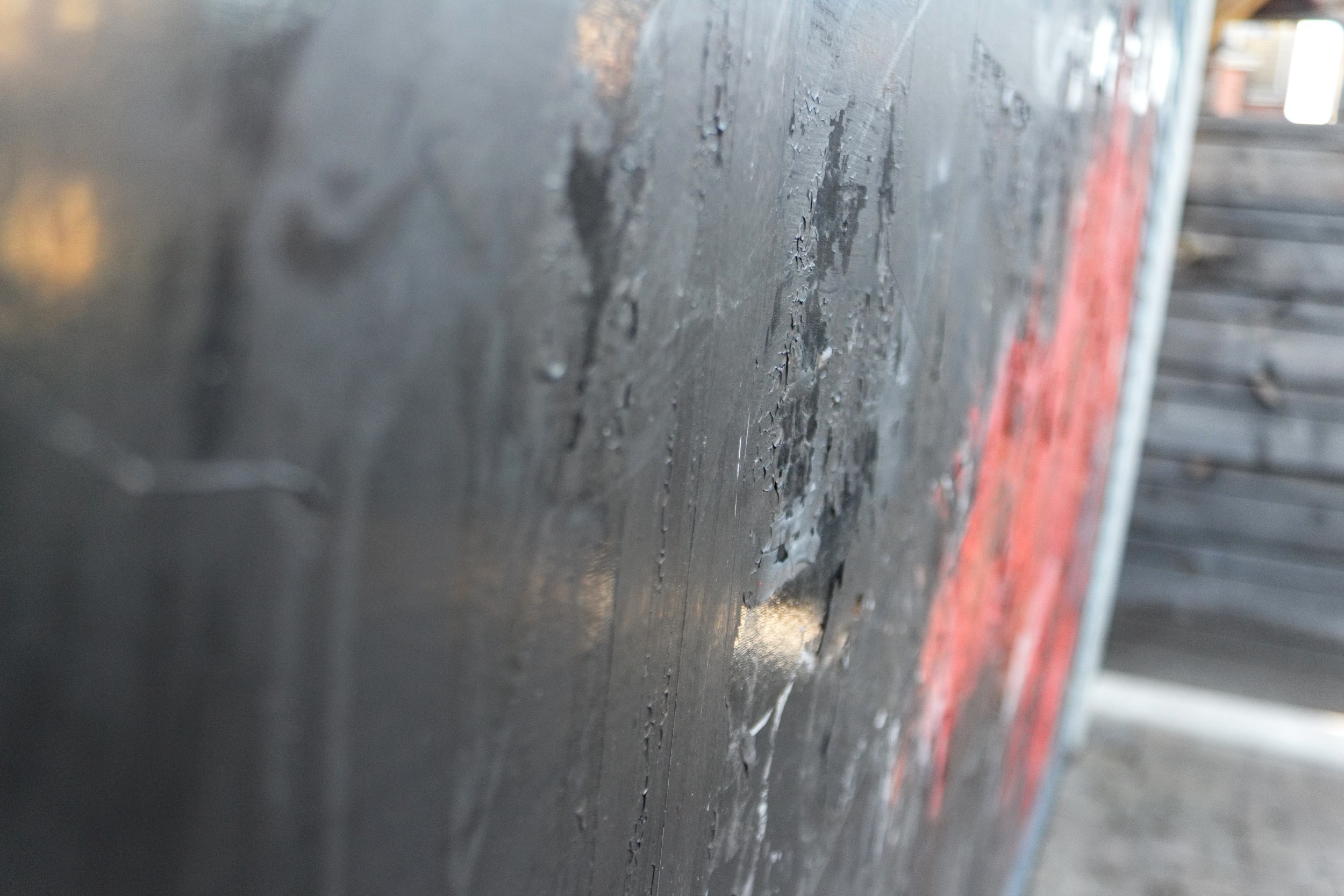
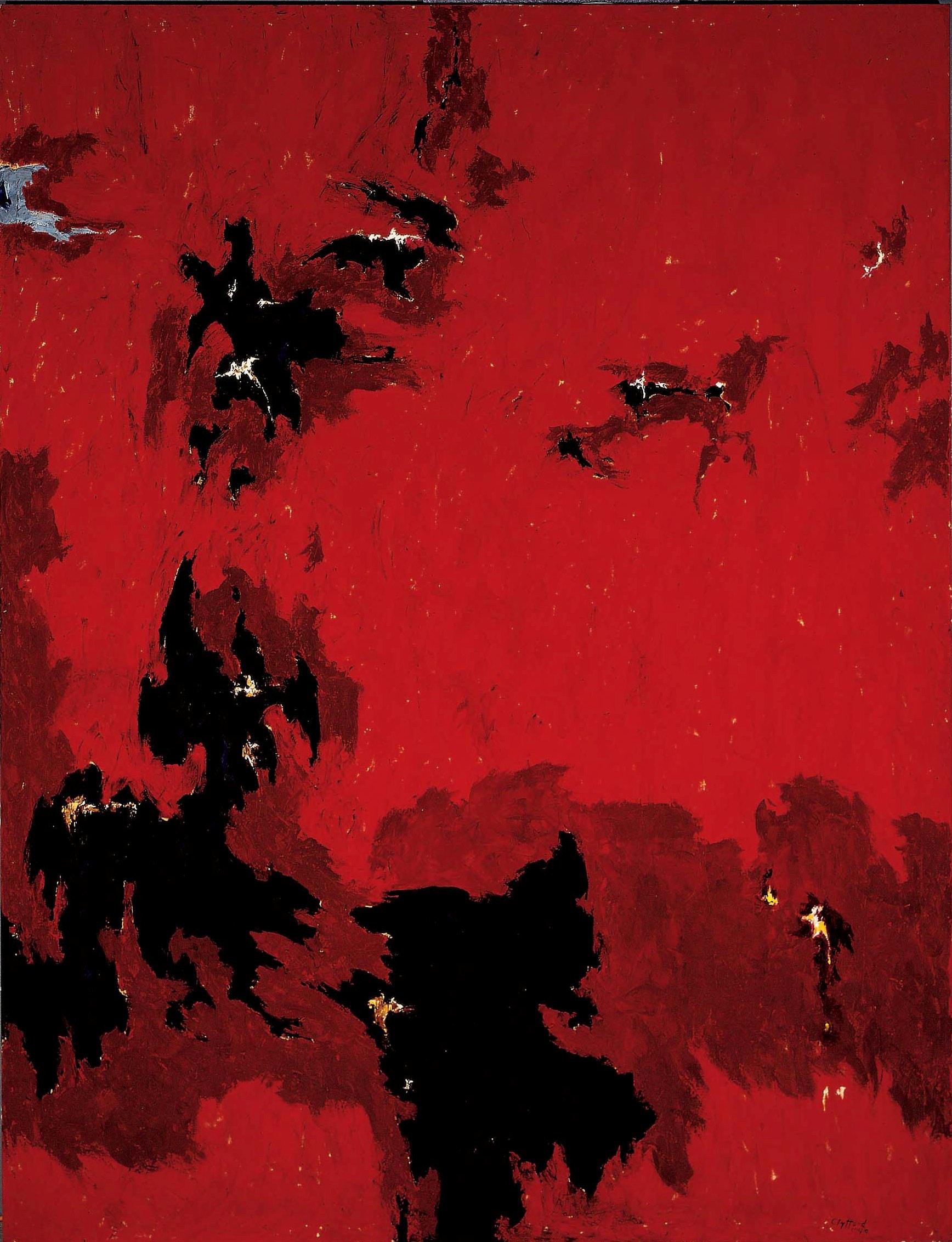
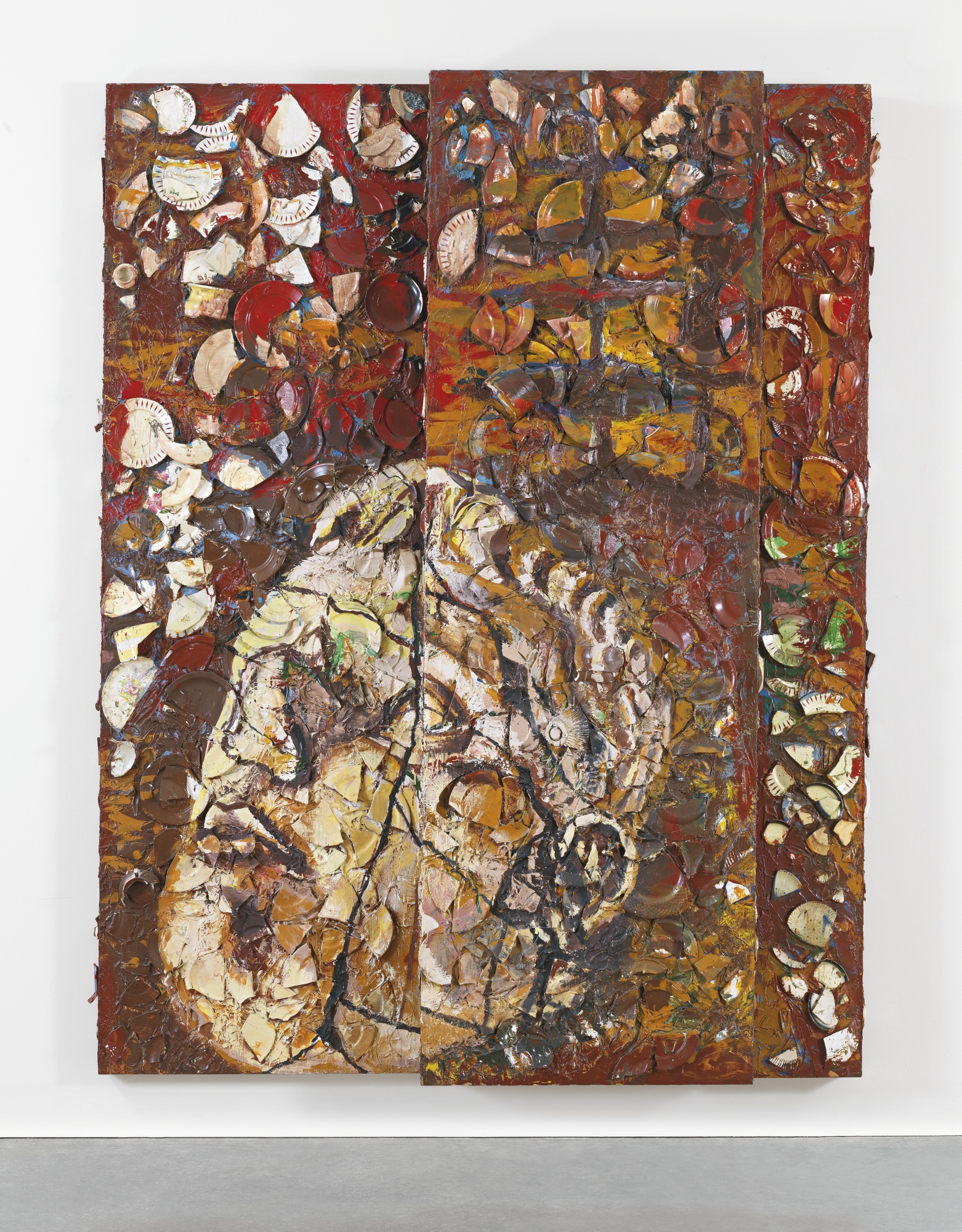
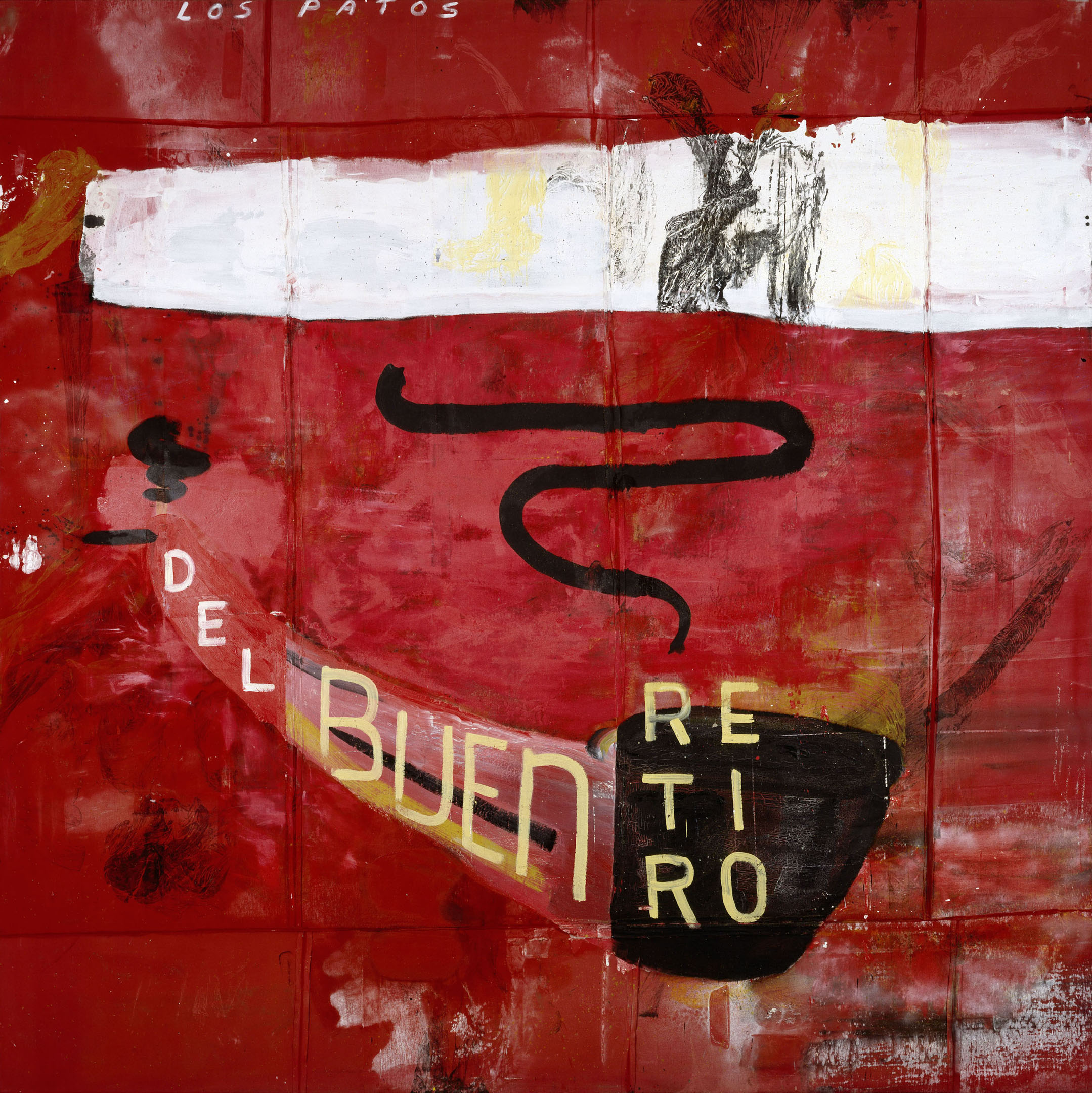

PULSE was a painting ripped straight out of my love for the twentieth century American Abstract Expressionist movement, both in painting and performance art. I wanted to capture the form, movement, and pure physicality of a human body, but I also wanted to create something that explored our diverse notions of the self, what it means to be you, to have a soul.

Hedonism and contemplation. I wanted PULSE to read like a jazz composition on the one hand, and a psalm on the other. In one way, you can look at this massive painting as a vibrant, sculptural field of color, with peaks and valleys of layered oil paint suggesting the impressions and sensations of a human form. In another way, the painting's blue core gives the piece an underlying sense of balance and continuity, as though the whole crazy train will stay on the tracks despite its wild form and lack of formal composition.

I painted PULSE on a section of an old billboard I found on the side of the road on a road trip to Whitby, Ontario. I couldn't resist the rough edges and surface of the board, so I took it home!

Clyfford Still, PH-385, Oil on Canvas, 1949
Like I said, the Abstract Expressionists were a huge influence on me at the time I was painting PULSE. I still don't know how Clyfford Still did it. His oil works have a vibrancy and roughness to them that I've always admired, though I've failed to duplicate them in my own work! Maybe it's the fact that he was known to grind his own pigments to mix into his oil. Or maybe it's the fact that he only ever painted on the rough, unprimed backside of the canvas to get that tactile quality in his paints.

Carrying the torch for the abstract expressionists amid a sea of postmodernists, Julian Schnabel celebrated what painters like Still were trying to say while simultaneously expanding the medium and craft of painting. He made it "OK" for me to experiment with tar, rope, and plaster in my own paintings, mainly because he was painting his own enormous works on plates, tarps, and old maps!